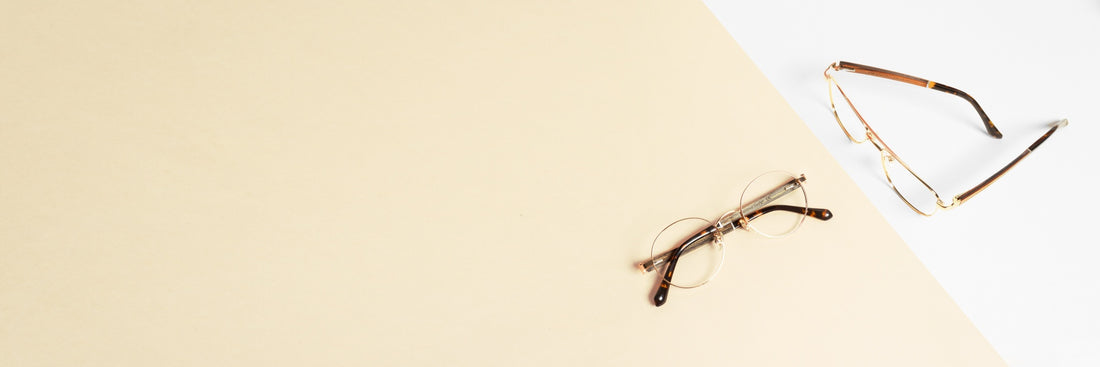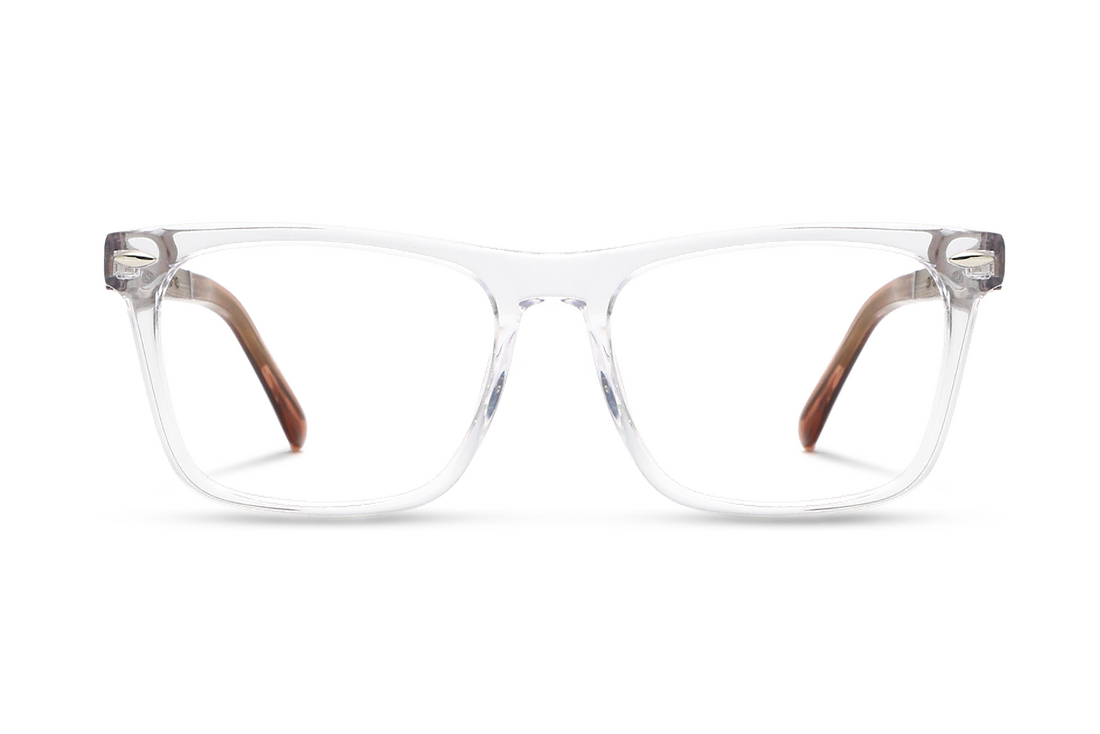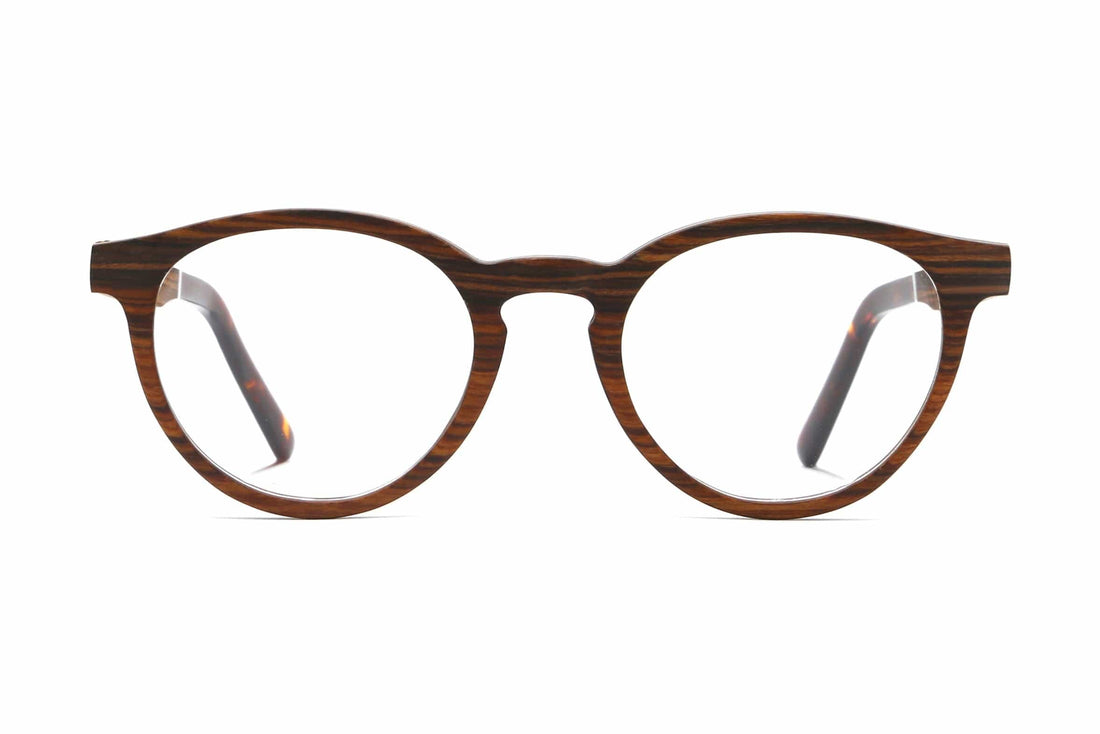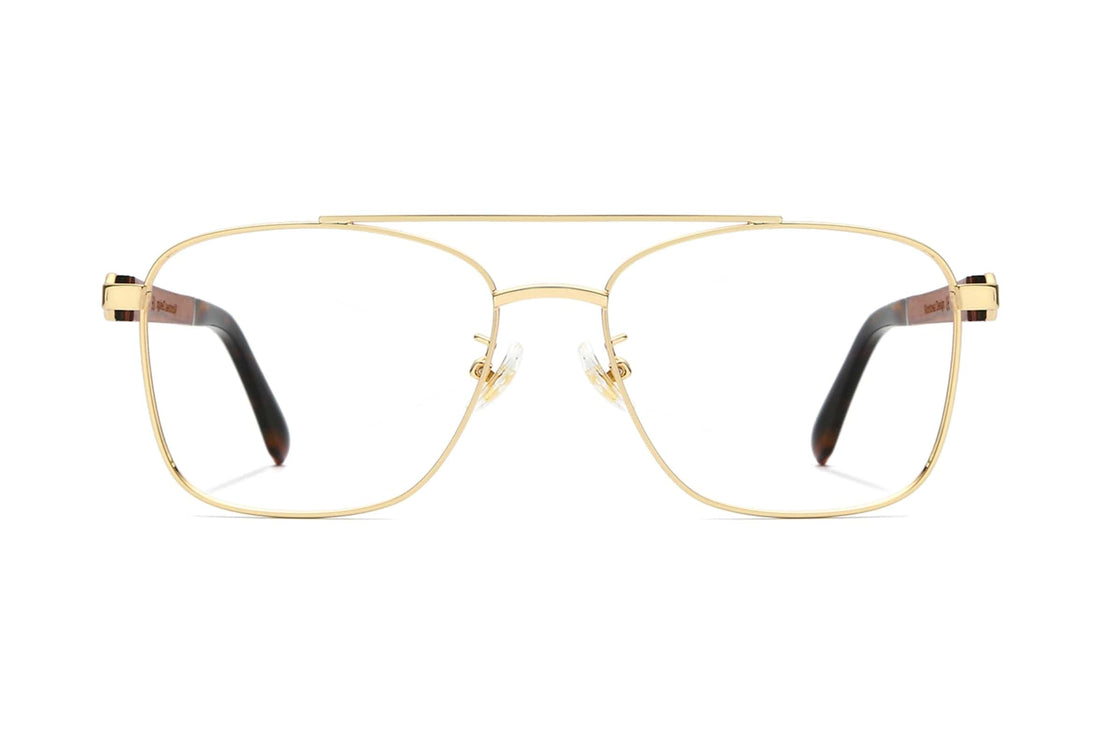
Is Anti-Reflective Coating Worth It? Anti-Reflective Coating Benefits
Is Anti-Reflective Coating Worth It?
7 min read • Posted on 7 August 2024
Anti-reflective (AR) coatings are one of those features you don’t fully appreciate until you have them. When you don’t, you’re constantly battling glare and reflections, but once you do, you’ll wonder how you ever lived without them. With AR coatings, nearly 100% of available light reaches your eyes, providing clearer, sharper vision. Not only does it reduce glare, but it also helps eliminate reflections on your lenses, making your glasses less noticeable and your view more unobstructed. Plus, it enhances the amount of blue light that reaches your eyes—especially useful for those who spend long hours in front of screens.
For anyone who wears prescription glasses, you know how frustrating it can be to deal with glare and reflections, particularly if you spend long hours working at a computer. An anti-reflective coating helps alleviate this by improving visual clarity, reducing eye strain, and blocking harmful UV rays when outdoors.
At Karywoods, we equip all of our eyeglasses with premium anti-reflective coatings to offer the best in comfort and protection for your eyes. Let’s explore the many advantages of AR coatings and why they could be a game-changer for your vision.
What is Anti Reflective Coating?
Definition and Purpose
Anti-reflective coating, more commonly known as AR coating, is a multiple microscopic layer or multilayer coating on the surfaces of lenses that suppresses reflections. These reflections can be a huge issue, leading to glare and light reflection from the lens. Light reflection from the lens can also weaken the amount of adequate light that transfers into the eyes, which again influences the clarity of vision.
AR coating can address these issues through a combination of metal oxides, each layer blocking specific wavelengths of light. This reduces reflections, thus allowing more light to enter the eyes effectively. This leads to increased visual clarity, less eyestrain, and ultimately, improved visibility, especially when the light conditions are unfavorable, for example, when you’re out at night or stare longer with your eyes on digital screens.
This extra benefit underlies all the others, making anti-reflection coating on the lenses more durable and usable. This available extra benefit made the process of removing the reflections worthwhile. First is anti-glare coatings, but once you have an anti-reflective coating on corrective lenses, the lenses are usually less likely to scratch or smudge, making them easier to keep clean and clear.
And they look prettier, too, like they’re not there. When the lenses are in, it’s much easier for others to look you in the eye, not just to see better, but without a distracting flash or moon turning their gaze into a dazzling problem.
History and Development
Anti-reflective (AR) coatings on eyewear have a rich history of innovation and improvement that began as early as the turn of the last century. With the development of optical instruments such as microscopes and telescopes, by the early 20th century, scientists introduced antireflection coatings to address the lost intrinsic light and the bothersome reflected brightness that affected the interpretation and effectiveness of those devices.
Shortly after, anti-reflective coatings began to play an essential role in the performance of other optical devices and eyewear by enhancing contrast, reducing reflections, and improving clarity.
Despite the improvements offered by AR coatings for eyeglasses, the first anti-reflective eyewear coating appeared in the mid-20th century. It was light reflected in the very fundamental early versions of this technology.
Essential steps included the development of multilayer coatings, which extended the operating range of AR-treated lenses and enhanced their durability, as well as advancements in nanotechnology and material science, allowing even thinner and more efficient layers of thin film to be produced, with both better glare-reduction and light-transmission performance and enhanced results such as protection against ultraviolet (UV) rays and hydrophilic smudge-repellent characteristics anti-reflective lenses.
Antireflection coatings have become a central component of high-quality lenses, making them imperative for all kinds of eyewear, from simple to professional photographers’ and drivers’ glasses.
Benefits of Anti-Reflective Coating
Improved Vision Clarity
The most critical benefit of AR coating is that it can increase visual clarity by reducing the amount of reflected light. Because AR coating allows more light to pass unobstructed through the lens, it increases the sharpness and contrast of what you see. In other words, AR helps to make everything you look at seem sharper because it enhances contrast and naturally reduces glare and reflection.
AR coating is particularly beneficial in dim light (such as when driving at night or reading in a dimly lit location) because maximizing the amount of light that enters your eyes is the most important thing. This ensures clear, sharp vision and makes seeing what’s happening around you easier.
The effect of AR-coated anti-reflective glasses is that nearly 99% of the available light passes unchecked through to your eyes, significantly improving clarity and reducing the stress and eyestrain that comes from trying to see past the reflection.
Moreover, AR coatings mitigate glare, another significant visual impairment. Like shiny images, glare can be severely distracting, damaging, or wildly uncomfortable when it bounces from multiple sources, such as other cars’ lights at night, digital screens, light rays, or dazzling sunlight reflected off surfaces into your eyes.
AR coatings minimize these disturbing reflections and glare, allowing you to see more comfortably and safely. For instance, if you spend long evenings on the road or at the computer, you know glare makes it harder to see. Reducing glare means easing your vision. The difference it makes to your eyes’ health and comfort can be tangible.
Eye Protection
Thirdly, they offer eye protection. As mentioned above, anti-reflective coatings significantly reduce glare and scratching and block UV rays. If you are wearing sunglasses with a UV coating on the front, they filter only the UV rays hitting the front side.
By applying an anti-reflective coating to the front, sides, and back of the camera lenses, the AR coating blocks an equal amount of UV in addition to what the front coating of the lens would filer. This is why UV coatings in AR coatings are crucial; simply applying the UV element to the same front and back surfaces of the lens would give only a 55 percent improvement in keeping the UV light out from the sides of lenses, which are highly vulnerable to damage.
By putting UV coatings in the anti-reflective layers, the full UV coating anti-glare glasses are hugely improved, protecting the eyes just as much as wearing sunglasses would protect your eyes. With this in mind, AR coatings can be a great choice to keep your eyes healthy in the long term. If you wear your glasses often or use them for outdoor activities, applying an AR coating could help guard your eyes against severe eye diseases like cataracts and macular degeneration.
Today, the benefit of diminishing digital eye strain is not less required, one of the most widespread problems. Exposing your eyes to digital screens for a long time can cause headaches, blurred view, or dry eyes, commonly known as digital eye strain. If you are the one who sits in front of the computer at work or spends a lot of time on prolonged computers, use your smartphone or tablet; AR coating will help you a lot with that.
Enhanced Appearance
Improved aesthetics is another significant benefit of anti-reflective coatings that is often overlooked. An anti-reflected front lens surface lets you look very transparently, making the wearer’s eyes even more apparent and straightforward. This can be very useful to people who wear ordinary glasses professionally, especially those who are frequently on camera.
A lens with no annoying reflections is less apt to dominate your face and disguise your genuine facial expressions and eye contact. The result is better communication and a better impression in social interactions and professional settings.
In addition, the AR coating eliminates ‘glasses glare’ in photographs. Have you ever taken a picture and noticed that awful reflections obscuring your eyes? It’s annoying and often happens to people who wear regular glasses. With the AR coating, these reflections are minimized. Say goodbye to seeing more layers, just the frame, and say hello to crystal-clear, brilliant photos.
Applications of Anti-Reflective Coating
Everyday Use
The everyday use of AR coating makes the lives of glass wearers much more accessible and straightforward. First, AR coating helps reduce glare from familiar light sources, such as artificial indoor lighting and sunlight. Wearing AR-coated lenses allows me to complete many everyday activities, such as reading, driving, and computer use, much more comfortably and strain-free for my eyes.
This is because they diminish the natural glare and adverse effects of light on the eyes. This benefit is beneficial for people who frequently move between sources of light and darkness, as it helps them maintain the consistency of their vision as they move between changing lighting conditions.
Besides the functional benefits, AR coatings provide definite aesthetic benefits. The glass is seen as being clearer and virtually disappearing from the eye, an added advantage to individuals who are self-conscious about their appearance in glasses. The improved cosmetic properties of AR-coated glasses make them less noticeable, so you appear better-looking and more fashion-forward, and you can feel more confident going about your work, socializing with friends, or wherever you go.
Night Driving
Driving at night is another scenario where anti-reflective coatings can significantly impact your performance. Oncoming headlights and streetlamps can create a lot of glare and obstruct visual clarity. Anti-reflective coatings reduce glare, eliminating reflections from oncoming traffic, improving visual acuity, and increasing comfort. They also lower the risk of eye strain and discomfort associated with bright headlights and the reflections created.
Many people who frequently drive in the evening can significantly benefit from being able to drive at night without additional visual stress. Adding an anti-reflective coating to the lenses could dramatically improve their driving experience.
This greatly enhances safety, as the glare from a bright set of oncoming headlights can temporarily blind you while driving. Yet, this effect is mitigated by widely adopted AR-coated lenses. Another factor that impacts your driving performance is your ability to react quickly to threats, for instance, when other vehicles abruptly pull out without signaling.
AR coatings reduce dazzling reflections and maintain reliable vision, even when headlights reflect off low-lying floors or water. AR-coated glasses should be part of their essential accessories for anyone who spends long driving at night or in low-light conditions.
Screen Usage
Coatings are increasingly designed to reduce reflections and enhance our enjoyment and comfort while using screens. Most people spend more than one hour on screens daily. Anti-reflective coatings make it easier to deal with screen glare, which can help prevent eye strain after long hours looking at a computer, tablet, or phone screen. Glar is a problem with all digital screens.
Its effects vary depending on screen brightness, reflectiveness, and color compared with the surrounding ambient environment. Screen glare can be annoying and painful, leading to overall eye discomfort and fatigue. Applying anti-reflective coatings reduces glare, making it easier to look at the screen for extended periods without causing eye strain.
Because AR coatings reduce the amount of glare and reflections from the screen, they also increase focus and productivity. When glare is reduced, your eyes can remain more stable on tasks such as reading, surfing the web, or writing.
This visual comfort can increase productivity by helping you work or use screen devices for extended periods without the fatigue or discomfort that typically comes with screen use. For those who rely on digital devices for work and play, AR-coated lenses are an invaluable tool for eye health and improved performance.
How to Care for Glasses with AR Coatings
Cleaning Tips
After days of wearing new glasses with an anti-reflective coating, they no longer work, leaving distracting reflections everywhere. Using these uncoated lenses is straightforward, affordable, and conducive to a long experience with them. Rinse your AR-coated lenses with lukewarm water to clean them. This will remove dirt and dust from the surface.
Use your fingers to add a few drops of water-based, mild dish soap. Rub the lenses on both sides. Rinse again with water. Using a clean microfiber cloth, gently wipe the lenses until they dry. Completing these steps will ensure that you remove any smudges and dirt without damaging your lenses or delicate coating.
Do not use hot water; its harsh chemicals promote an influx of nasty little air bubbles that eventually lead to a cracked coating. Don't use paper towels or tissues to clean lenses; they are linty and will harm your lenses and accumulate micro-scratches.
Avoid most household cleaners, such as glass or cleaners made with ammonia, especially those for the dishwasher. These will degrade the AR coating over time. Clean your lenses with plain lens cleaner made for eyeglasses (usually available through your optometrist or eyeglass vendor). Keeping your lenses clean will also keep them free of dust and smudges.
Protecting Your Investment
You may also harm your glasses by not handling or storing them properly. Always put your glasses on using both hands and remove them using the same technique to avoid bending your frames. Please don’t leave your glasses hanging from the earpieces or place them with your nosepiece resting because this puts extra strain on the frames, mainly when your glasses aren’t being used.
Storing them in a hard case at night will further protect your glasses from dust, dirt, and accidental damage from tossing them into a bag while traveling. Fina ly, inspect your sunglass lenses periodically for worn, loose screws or bent frames. Tending to these issues quickly will prolong the life of your glasses.
When to Replace Lenses
Understanding when to replace your lenses is essential to eye health; even under the best care, AR can avoid regular use and daily cleaning. Persistent scratches or smudges that won’t come clean are tell-tale signs that your lenses should be replaced; the AR coating may have worn away to the point that it no longer prevents glare or reflects light, thereby reducing vision clarity. If you experience a decrease in clarity or an increase in eye fatigue when wearing your glasses, it may be prudent to check your lenses.
Cost and Availability of AR Coating
Pricing Overview
The cost does not vary greatly, but the variability is significant, depending on the type of lenses, the kind of AR coating, and where you buy your glasses. Adding AR to your lenses is generally cheap and affordable for most.
High-refractive index lenses, which are thinner and lighter than regular lenses, can come with AR coatings as standard, raising the costs of the lenses in general. High-end AR coatings often provide steps above standard protection, such as more robust scratch protection, UV protection, and water-repellant qualities, which can add to the cost.
Where to Get Anti-glare Glasses
When it comes to buying glasses with anti-reflective (AR) coating, you have plenty of options, from local optical shops to online retailers. However, Kraywood stands out as a top choice for premium glasses with AR coatings. We provide high-quality prescription lenses, crafted in our Canadian optical lab, and every lens comes with premium AR coating and scratch-resistant coating at no additional cost.
For those seeking extra protection, we also offer the option to add a premium blue light coating to help reduce eye strain from digital screens with blue light glasses. Simply get your prescription from your local eye doctor, and let Kraywoods take care of the rest with stylish, eco-friendly eyewear designed for visual clarity, comfort and durability.
Final thoughts on anti-reflective coatings
Anyone who intends to improve their vision and maintain their eyes can make the right decision by buying an anti-reflective coating. This coating reduces glare and reflections, ensuring you see what’s ahead clearly and even more comfortably, especially at night.
The anti-reflective coating gives your lenses visual clarity, UV protection, and durability. Take advantage of this vital feature of a quality pair of glasses. They are definitely worth it if you want to keep your eyes safe and healthy all the time.
 Heba Ahmed
Heba Ahmed













